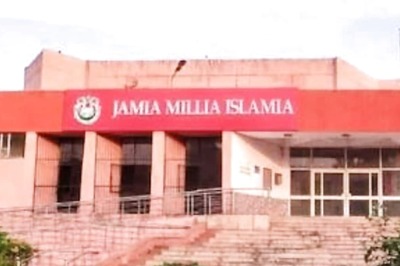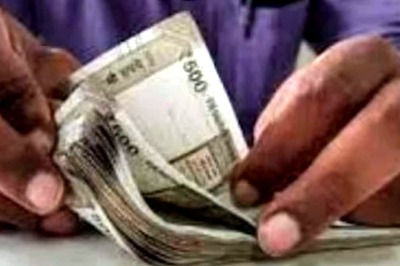
views
New Delhi: The air in the national capital has turned toxic, as it does every year around this time, but many are still hazy about the causes. Fingers are being pointed at farmers in neighbouring Punjab and Haryana with the burning of agricultural waste, or stubble, identified as a key source of the pollution. With residents of Delhi and satellite towns expressing outrage in large numbers, authorities have started taking steps. Several farmers have been penalised and blacklisted. And they are now despondent at being “targeted”, with few avenues to get themselves heard.
As a mark of protest, farmers in Mansa district of Punjab’s Malwa belt went on a stubble-burning spree. They say they are angry that the administration is only levying fines on them and is not trying to find a viable solution to the problem.
Gora Singh, one of the protesting farmers, says, "Forty to 50 farmers burnt stubble in their own fields over the past two days to protest against the fines. The government pushed paddy sowing to June 20, which is late by 20 to 25 days. After paddy is harvested, farmers are left with very little time to ready their fields to sow the next crop. The moisture in the stubble increases by 5 to 10 per cent around this time of the year and this leads to more smoke when it is burnt. We are demanding compensation of Rs 200 per quintal to enable farmers to get the stubble removed by employing labourers.”
Adding to their woes, crop production has reportedly gone down by by 15%. “Owners of the modern combine harvesters demand a high price which most marginal and small farmers cannot afford to pay. Even after their services, the stubble does not get cleared. In this scenario we are protesting against the fines being levied on the farmers,” says Gora Singh.
Delhi Chief Minister Arvind Kejriwal has repeatedly blamed Punjab and Haryana for failing to sufficiently address the problem that leads to the city turning into a “gas chamber” around winters every year. However, the BJP-led central government has told the Supreme Court that stubble burning in Delhi’s neighbouring states decreased by 41% between 2016 and 2018.
Jagmohan Singh, secretary of the Bhartiya Kisan Union, says, “Farmers are protesting to draw attention towards the need to work out a solution to the problem and not just indulge in blame game. Fines should be levied as per the size of the land holding. We have also demanded that Rs 200 per quintal be given to the cultivators and not land owners as in Punjab a majority of middle to big farmers give their land to cultivators; so the money should go to them only and not absentee farmers.”
He also points out that heavy agricultural equipment such as combiners cost between Rs 14 lakh and Rs 22 lakh, which is too steep for the small and marginal farmers in Punjab.
“Why would a small, marginal farmer or cultivator buy such expensive machinery to harvest, when he needs it for just ten days for harvesting? Owners of these farm implements have also increased rent charges because of strict measures by the government,” he says. Research organisations like CRRID have also found that pollution caused due to stubble burning in north India is a mere eight per cent, Jagmohan argues.
“We request Delhi chief minister Arvind Kejriwal to push for a solution to the problem of stubble burning as well as pollution instead of blaming poor farmers,” he says.


















Comments
0 comment